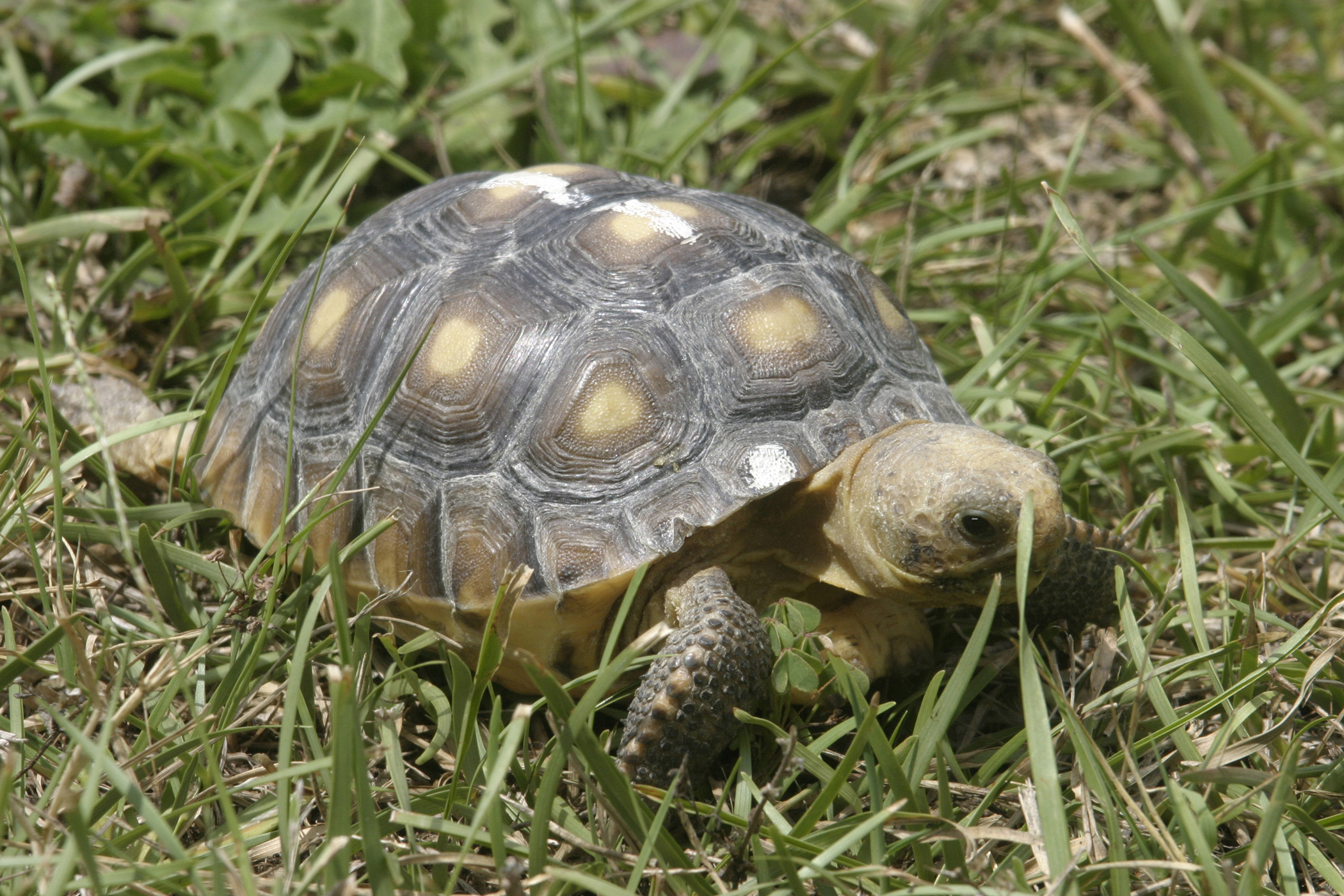Aiken, S.C. – Georgia’s gopher tortoise population will get a significant boost with the arrival of 153 tortoises on Friday, June 5, at 9 a.m. at Yuchi Wildlife Management Area near Waynesboro. A collaboration between the University of Georgia Savannah River Ecology Laboratory, St. Catherines Island Foundation, the Georgia Department of Natural Resources and Reed Bingham State Park will result in the largest gopher tortoise release to date in Georgia.
“The current population at Yuchi is depleted and nonsustainable,” said Dan Quinn, SREL graduate student from the UGA Warnell School of Forestry and Natural Resources. “We estimate the number of adults to be around 80, and recent findings suggest a population needs a minimum of 250 adults to be sustainable.”
Since August 2014, Quinn has been raising most of the cohort from eggs to yearlings in an indoor, climate controlled predator-proof habitat at SREL.
Found in sandy coastal plain habitats, the gopher tortoise is considered a keystone species because its deep burrows are used by hundreds of other animal species, and its feeding habits disperse seeds and improve germination for plant communities. Because of habitat loss and other factors, gopher tortoises are a candidate for listing under the federal Endangered Species Act in the eastern part of their range. Conservation partners such as SREL and DNR are working to better understand and conserve this iconic tortoise, Georgia’s state reptile.
John Jensen, senior wildlife biologist with DNR, said restoration and compatible land management at Yuchi have improved the habitat at the 7,800-acre wildlife management area to the point it can sustain a viably large tortoise population.
“However, there are not enough native tortoises persisting to build the population without intervention,” Jensen said. “By collecting eggs from viable populations, hatching them in the lab, head-starting the hatchlings past their most vulnerable size class and releasing them at Yuchi, we will build the population to a sustainable size.”
The cohort is a diverse population from St. Catherines Island, Reed Bingham State Park near Adel and Yuchi.
“The benefit of a diverse population is that you are less likely to get inbreeding,” said Tracey Tuberville, associate research scientist at SREL and the Warnell School of Forestry and Natural Resources and Quinn’s adviser and collaborator on the project. “When a small population is closely genetically related, you are likely to have low hatching success. More importantly, we did not want to deplete any one site of hatchlings.”
Quinn and Tuberville said Yuchi is ideal for the study because it has sandy soils and open sunny habitat-perfect for gopher tortoises.
The tortoises will be placed in protective pens with access to natural forage for 30 days. This will allow them to acclimate to their new environment and the dangers posed by predators.
Close to Independence Day, the cohort will be removed from the pens and join the growing population, which includes a cohort that Quinn released in May 2014.
Terry Norton, director and veterinarian of the Georgia Sea Turtle Center and veterinarian at St. Catherines Island, evaluated the St. Catherines Island population and served as consultant on the project.
Savannah River Ecology Laboratory
The Savannah River Ecology Laboratory is a research unit of UGA, located on the Department of Energy’s Savannah River Site near Aiken, South Carolina. SREL pursues basic and applied ecological research, provides advanced hands-on educational opportunities to undergraduate and graduate students, and provides environmental stewardship and awareness through public outreach. For more information about SREL, visit www.srel.uga.edu.


